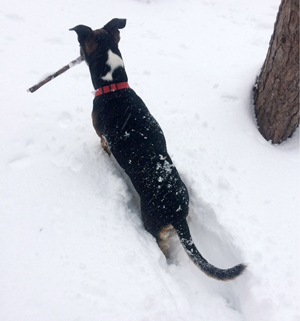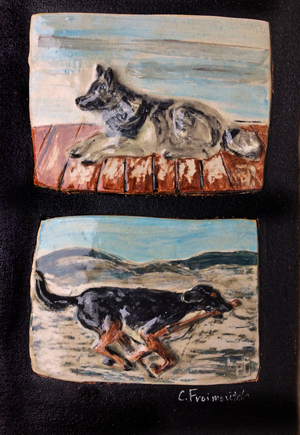He abruptly raised his hand as if to hit my lovely dog. My dog just looked at him, unsure what to think. My dog-walking, human acquaintance looked at me and said “You’ve never hit your dog, have you?”
“No need…”
There are two ways to raise a dog – either through praise or punishment.

We got in a discussion about training dogs. He came from a farm background where discipline was instilled with a heavy hand. I had taken another path, decades ago, inspired by a book called “Training your Dog Positively.” In a nutshell, it promoted praising positive behaviour in a big way while acknowledging challenges with brief but succinct and mild corrections.
Both our dogs were very well-behaved and could walk off leash by our side. The difference was his dog worked from a basis of fear – “I better be good or I’ll be scolded or hurt.” My dog functioned based on positive reinforcement – “He’s nice to me when I work well.”

The two mindsets create vastly different beings – one is fearful, one is positive:
• Opening with positive expectations and intrinsically positive outcomes creates an atmosphere of wanting to perform well.
• Coming in with a “Do this, or else!” attitude creates a tougher environment resulting in less (positive) risk taking and community cohesiveness.
Extrapolate these two mindsets to the classroom and you create two different learning environments.
What positive reinforcement might look like:
• To help establish expectations and positive outcomes during transitions I offer drumming opportunities to students (and the whole class) when they transition quickly. The drumming creates a positive outlet for the whole class to work towards. See my drumming transitions featured in Professionally Speaking, “Get Creative” on page 32-34.
• Praise positive behaviour publicly: I draw class attention to a display when it exceeds expectations – “Wow! I love how Djenane has organized this science project.”
• Address missed expectations / poor performance privately, quickly and with support: Quietly at their desk “Hi Robin, I notice your science project is missing parts. Are you ok? What do you need to make this better?”
• Praise positive changes, however small: “Thanks for getting your shoes in the right spot today!”

Sometimes, stronger corrections are needed but they should be brief and effective before returning to positive praise in the classroom.
Recently, I saw an article sharing quantified studies that recognized the positive effects of praise and positive mindsets in teaching.
The studies saw significant effects of positive teachers in controlled studies.
Praise the positives publicly.
Manage the challenges quietly.
That’s good news for my dogs and for students in the classroom.
